
Watch: Debora Moore
A pioneer of glass techniques, this renowned creator is one of the few Black female artists in her medium.
Through ceramics, sculpture, jewelry and public art, the multifaceted artist makes Black history tactile.
by Jasmine Mahmoud / June 1, 2022

How might American history be told through ceramics? If you’re Seattle artist Esther Ervin, you create a series of clay vases — one of which illustrates lynching. On a smooth grayish vessel, she adds real twigs, reddish etchings of tree branches and superimposed clay bodies noosed at the neck and bound at the feet with actual twine. Part of her ceramic series Do Black Lives Matter?, this vase was among five shown in fall 2021 through the Shunpike Storefronts program in an Amazon office building window in South Lake Union.
Ervin, 68, says this particular series was inspired by David Drake, an enslaved Black potter who lived in South Carolina. “This is similar to the shapes that he would build for his captor, and he would write poetry on his vessels,” Ervin details. Among the other vases: one depicting Black hands bound by an actual chain above symbols representing the specialized labor that Africans did, “including household duties, blacksmith[ing] and weaving,” she explains. A third refers to “being caught and sold and chained.” A fourth: the white “slave patrol.” And a fifth, about “the evils that were done to women.”
Ervin is an artist, curator and arts administrator who has worked in Seattle for more than two decades. Making work in mediums of clay, metal, wood, fiber and found materials, her art is often political, responding to racism, bigotry and climate catastrophe. Across her career, she has had exhibitions in Seattle at the Center on Contemporary Art, Dendroica Gallery, M. Rosetta Hunter Art Gallery at Seattle Central College, Onyx Fine Arts Collective, Washington State Convention Center (as part of Seattle Metals Guild Biennial Exhibitions); and in Renton, Bellevue, Issaquah, Tacoma and Shoreline; and internationally in Beijing and Lithuania.
Born in Somerville, New Jersey, Ervin attended college at University of California, Irvine, where she majored in biology, and studied abroad in Beirut. She received her MFA from California State University Long Beach in 1988, where her thesis focused on medical illustration. “You develop an awareness of how things are situated in the body,” she explains. To this day, her work threads connections among science, nature and art — for example, her work using gourds, a “biological form” whose curvature she appreciates. “Then you alter them,” she says, “so that they look a little different from the way they grew” by adding beads and metal bits.
In the late 1990s, Ervin moved to Seattle, where she encountered and joined artist communities, including Festival Sundiata at Seattle Center, which celebrates African diasporic culture. There, she coordinated an expansive art exhibit and curated similar exhibitions at Seattle Center in the early 2000s.
Ervin joined the Seattle Metals Guild and the Northwest Wood Carvers Association, where she worked alongside the late Jim Smith, a Black master carver who lived in Tacoma. She also became a docent in training at the Seattle Art Museum, which she says “was very enlightening in my artistic career, because it was like having art history again.”
Physically, Ervin is tall, slender, with long, gray sisterlocks that cascade down her back. Her manner is introverted, but her curious eyes convey someone with a wealth of experience. She is someone who has traveled (she was a Peace Corps volunteer in Colombia), speaks other languages, spends time in nature and deep thought, and connects her cerebral world to her artistic one, which spans so many materials.
There is a thickness to Ervin’s work: in her often-naturalist materiality (fat gourds, hefty ceramics, meaty wood frames), in seriality (exploring an idea several ways), and in her research-driven process. She has been working on a new series about stereotypes, using hand colored inkjet and laser prints on fabric, depicting historically marginalized groups, including Irish, Jewish, Black, Japanese, Chinese, Mexican and Native American people.
One of Ervin’s strongest contributions to Seattle culture is through her curation. She has curated over 50 shows, including as art gallery coordinator at South Seattle College, from 2003 to 2007. For decades, she has been affiliated with the Dr. James W. Washington, Jr. & Janie Rogella Washington Foundation, first as an artist in residence, as a studio technician in 2012 and as director from 2013 to 2018. “I was on the board that brought about the evolution into Onyx [Fine Arts Collective],” she notes about the gallery that celebrates African diasporic work. And this year, she curated the exhibit for the annual ACES: Artists of Color Expo & Symposium.
For Ervin, her role as a curator and artist sometimes overlap. In 2016, she and her partner Al Doggett were selected as the curatorial team on the Liberty Bank Building project, a homecoming of sorts that seeks to rectify Black displacement from the Central District with affordable housing and commercial space at the site that was once Seattle’s first Black-owned bank. She and Doggett brought in Northwest artists Aramis O. Hamer, Ashby Reed, Inye Wokoma, Lisa Brown, Lisa Myers Bulmash, Minnie Collins and Lawrence Pitre.
But soon, the project manager asked Ervin to contribute art, too. Among her Liberty Bank works is a water feature with sculpted salmon making their journey way up a river — an “homage to the first people,” Ervin shares. It is also a nod to the famous salmon fountain made by James W. Washington Jr., which stood in the Central District for 20 years and was recently restored and reinstated. Both splashing sculptures now sit across the street from each other, nodding to the difficult path Black people face in America.
So much of Ervin’s research-driven work tells undertold histories. In 2019, she made Windows to the Life of Al Larkins, named for the Black Seattle teacher who lived in the Madrona neighborhood, which has a park named after him. “He taught art at a correctional center,” Ervin explains. “He was a member of Madrona Presbyterian Church, and he worked with the choir. He was an Army musician. He taught at Franklin.” Ervin met with his widow, who shared remembrances and photos of Larkins, which Ervin combined on a reclaimed wood door as a temporary installation in the park.
Ervin and Doggett live near Larkins Park in a home overflowing with art, made and collected. Among her own work is “We All Wear the Mask,” a clay sculpture depicting faces of people from different cultures, inspired by “We Wear the Mask” by Black poet Paul Laurence Dunbar. “But in this society, we all have to do that,” Ervin says, meaning covering one’s identity for protection.
Also in the mix: what she calls “sketches,” box-shaped sculptures made from wood and other leftover and found materials, like bits of rulers or metal. And there is research-based jewelry. One necklace features clothespin-shaped wood, round white fish bones and vinyl-red dots. It’s meant to evoke a slave ship, Ervin says, “the people and the bones and blood and sweat.” It also represents her continued process to fight oppression — and to document American history — through art.
Black Arts Legacies Project Editor

A pioneer of glass techniques, this renowned creator is one of the few Black female artists in her medium.
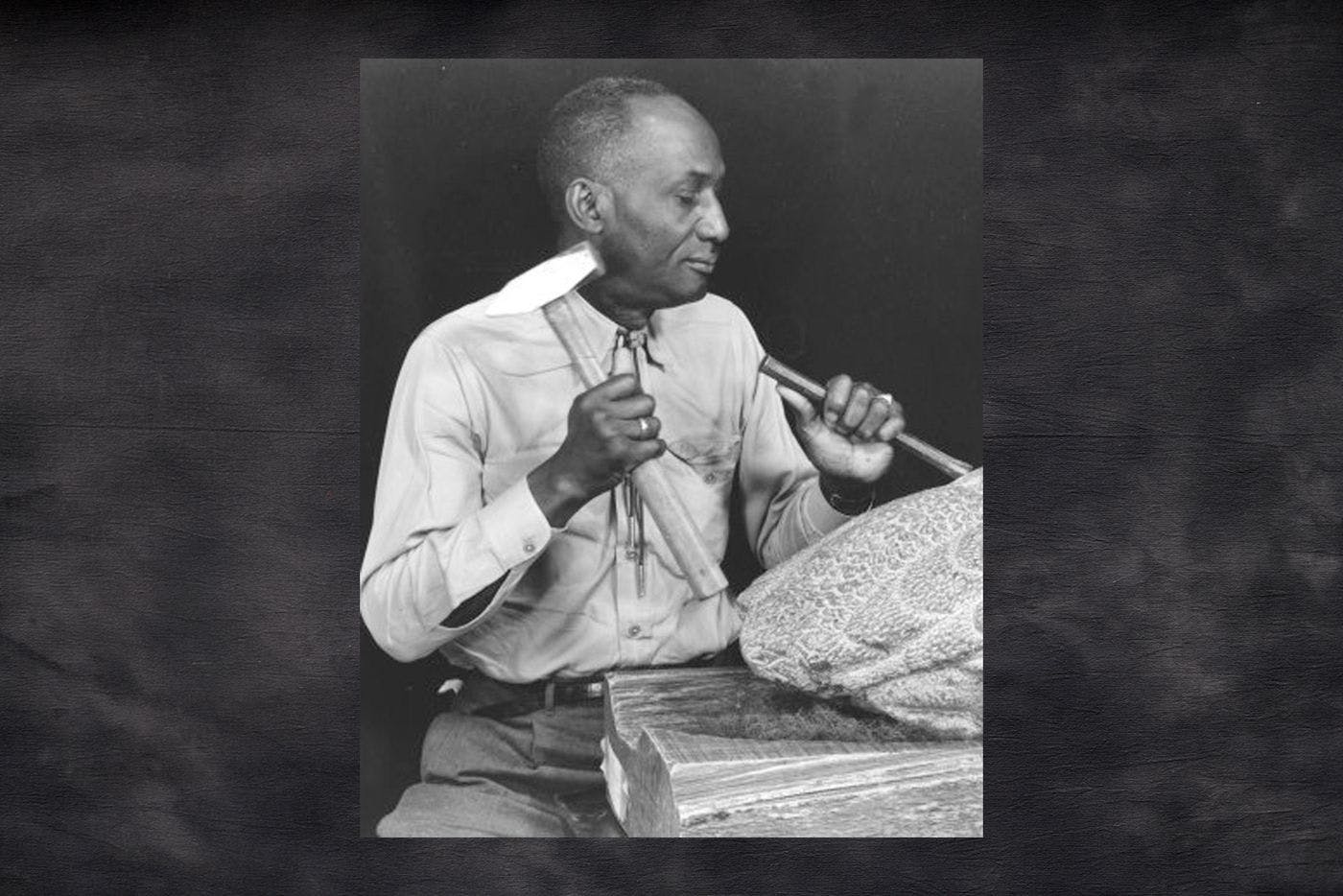
An influential member of the noted Northwest School, the Central District sculptor turned his home into a community center for artists.

As a direct connection to the Harlem Renaissance, this often overlooked painter inspired generations of Seattle movers and shakers.

Salvaging old cloth and scrap metal, the longtime Seattle sculptor finds beauty in what’s discarded.

This Seattle artist channels his personal history and activism into vibrant murals and abstract paintings.

With meticulous skill and a communal approach, the longtime Seattle artist has cut her own path.

The first Black art instructor in Washington was an experimental artist ahead of his time.
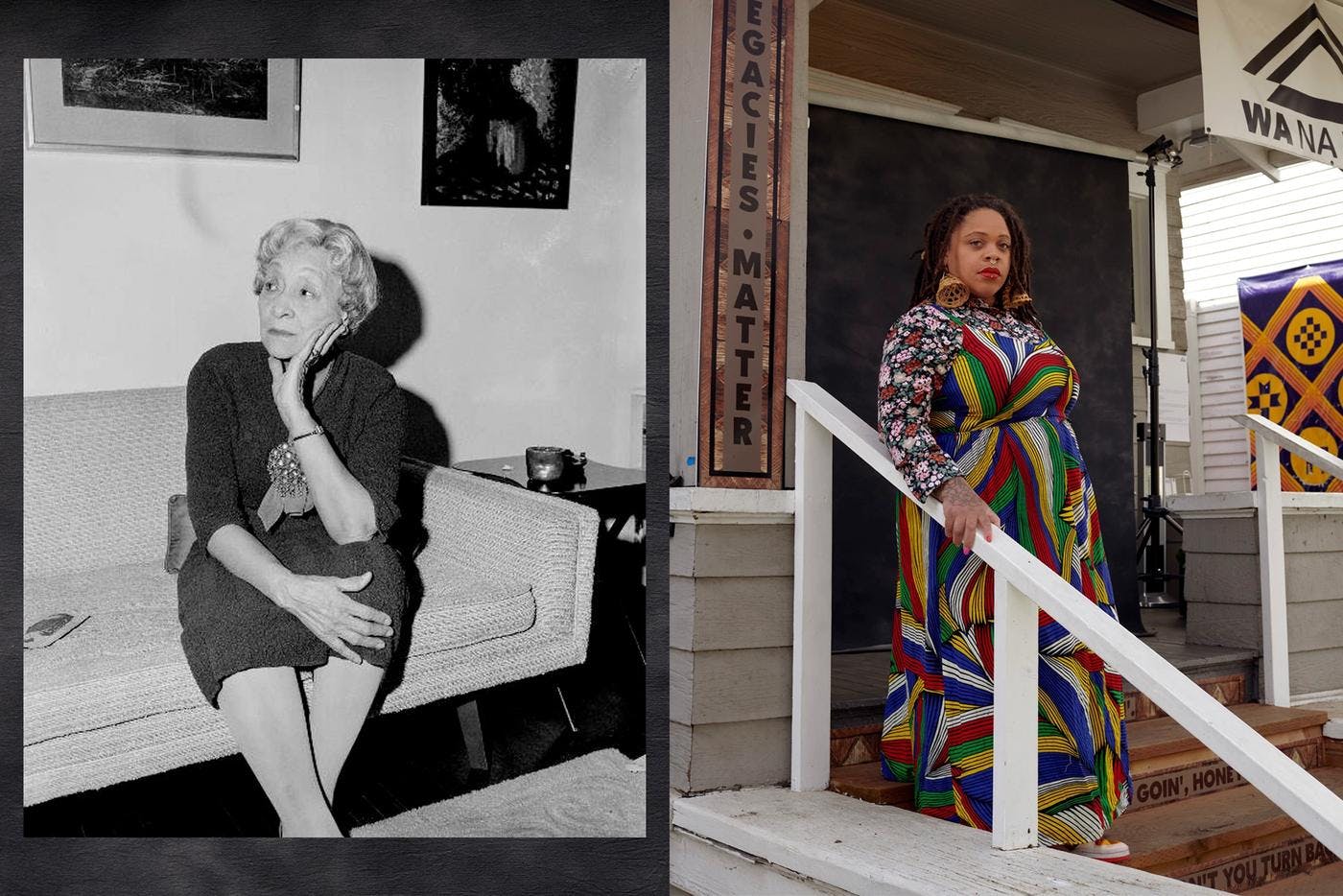
Two curators separated by decades turn homes into galleries to support artists.

The influential art teacher uses books, found objects and photography to provoke thought and shift perception.
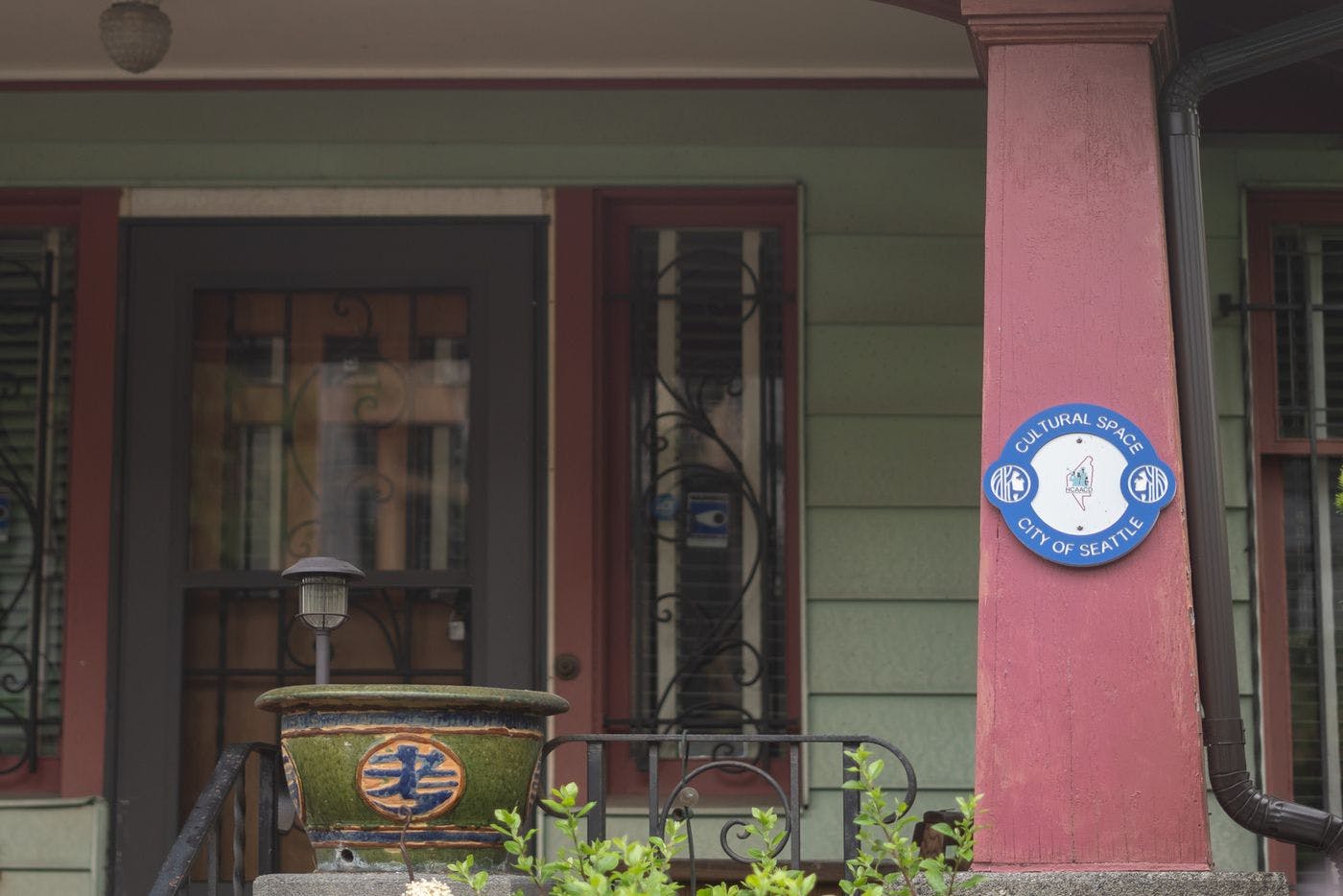
The late couple's house is now a cultural center that inspires the next generation.
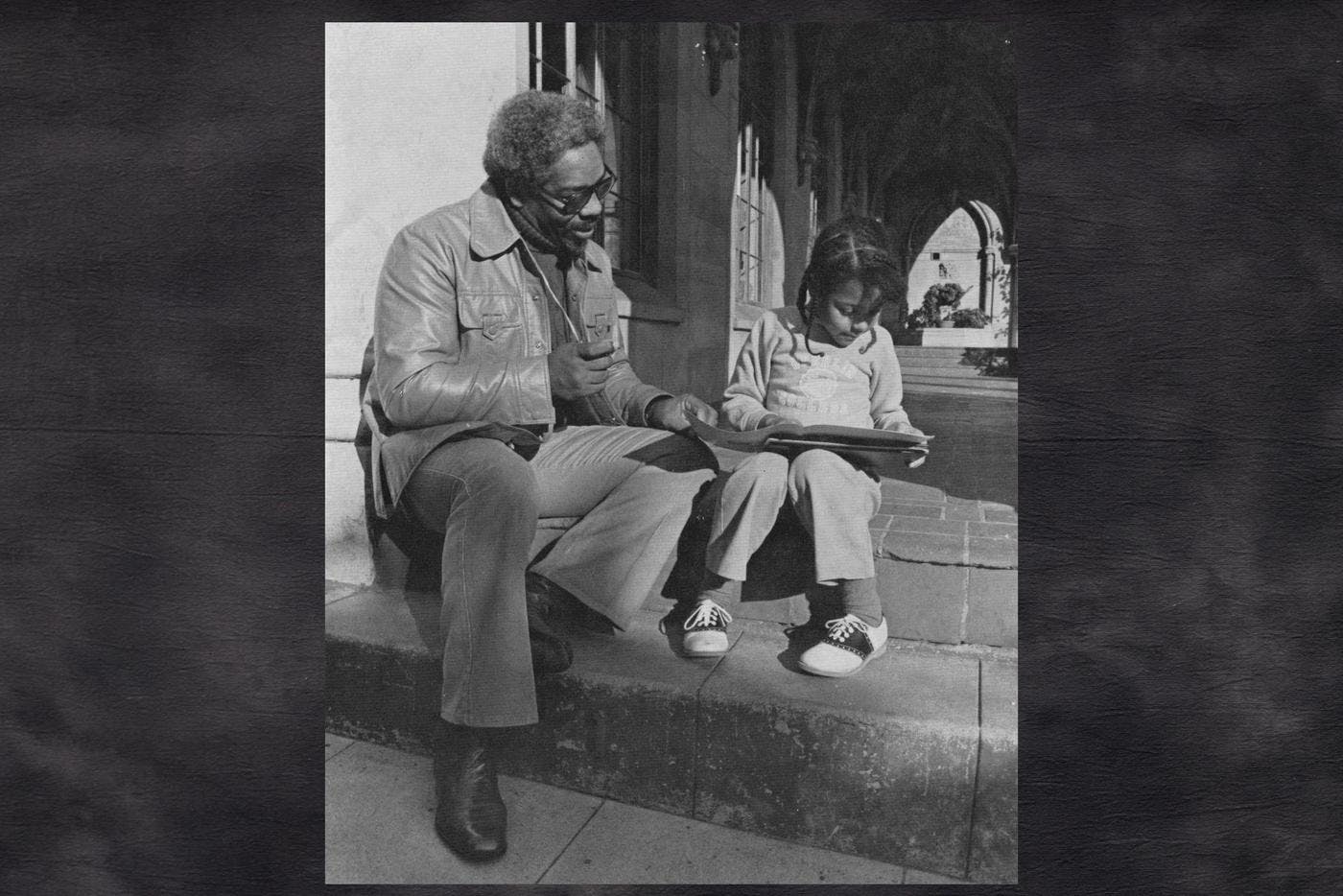
The late director, producer, stuntman and teacher used film and video production to lift up the voices of Seattle’s Black community.
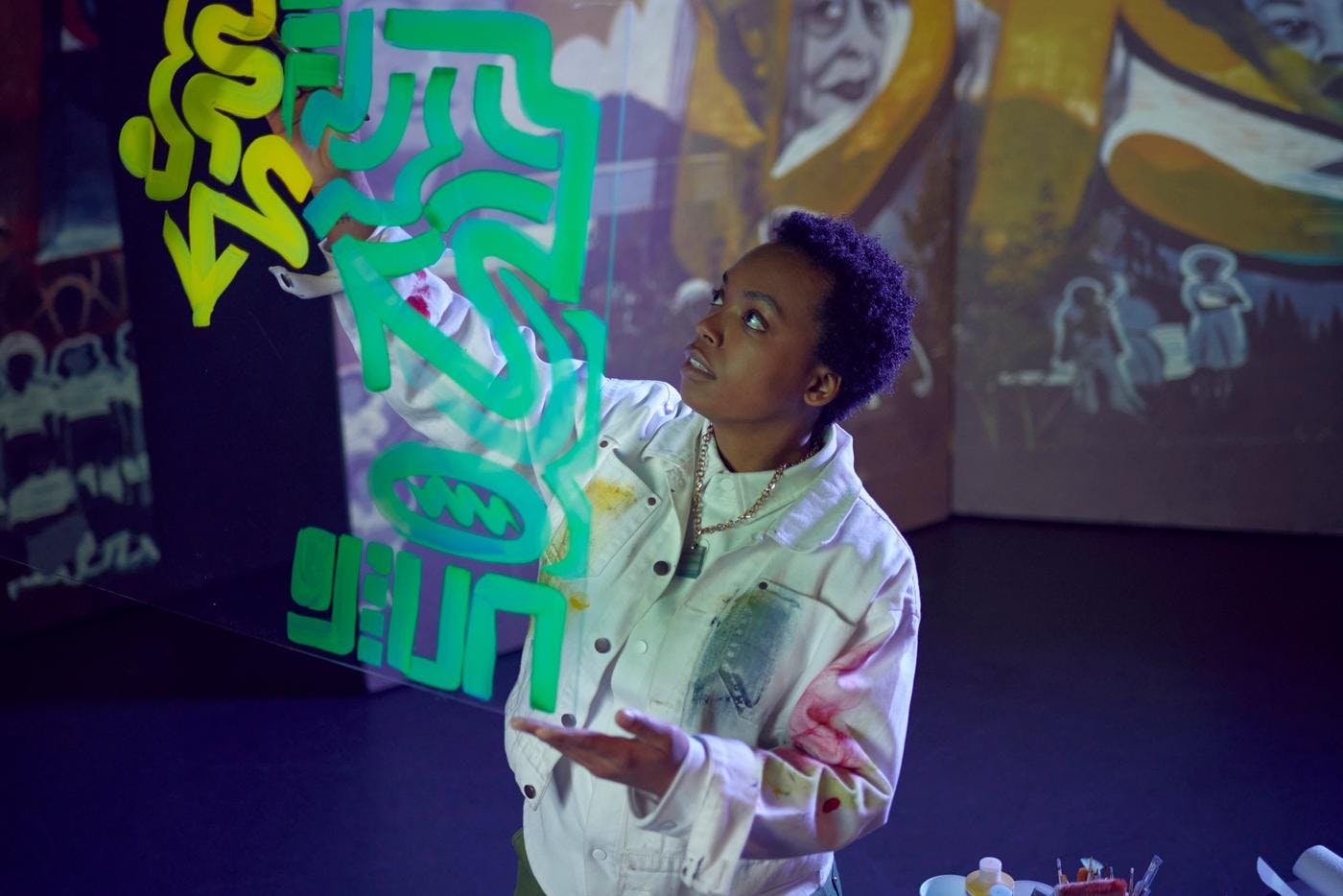
Through public murals, collaborative projects and custom sneakers, this artist is leaving her footprint on Seattle history.

The curator, gallerist and artist is resisting the art establishment with bold immersive experiments.

From intricate portraits to multistory murals, the artists bring Black history and bold color to the cityscape.
Thanks to our Sponsors
Your support helps Crosscut create projects like Black Arts Legacies. Learn how you can help with a one-time donation or recurring membership.
Support Crosscut